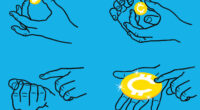An investigation identified hundreds of artifacts linked to indicted or convicted traffickers. What does this mean for the future of museums?
In the village of Bungmati, Nepal, above an ancient spring, stand two stone shrines and a temple. On the side of one of those shrines is a large hole where a statue of Shreedhar Vishnu, the Hindu protector god, used to be.
Carved by master artisans nearly a thousand years ago, the sandstone relic was carefully tended and worshipped by local people. Sometime in the early 1980s that tradition abruptly ended when thieves removed the 20-inch statue. A Bungmati resident, Buddha Ratna Tuladhar, recalls how the community was “overwhelmed by melancholy” over its loss. “We kept hoping the statue would be restored, but it never was,” he said.




